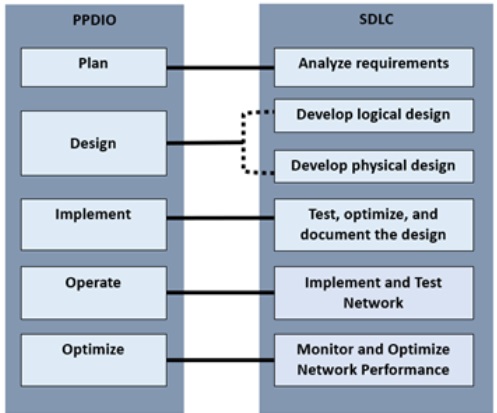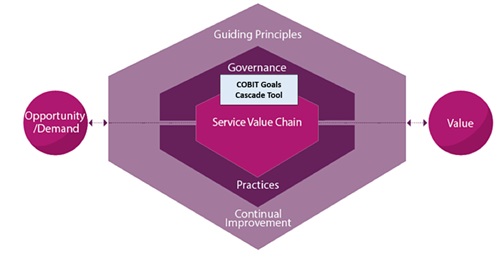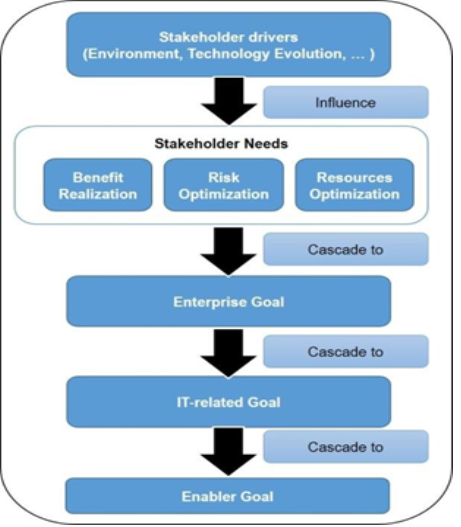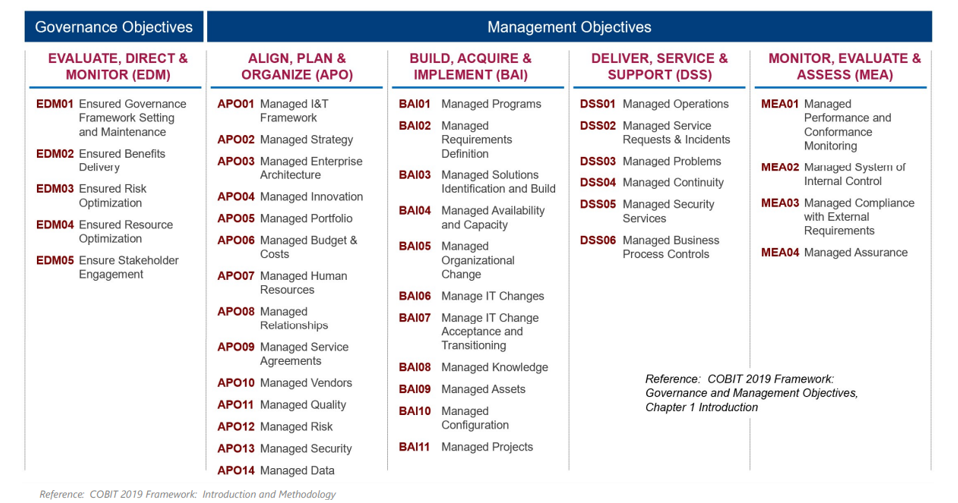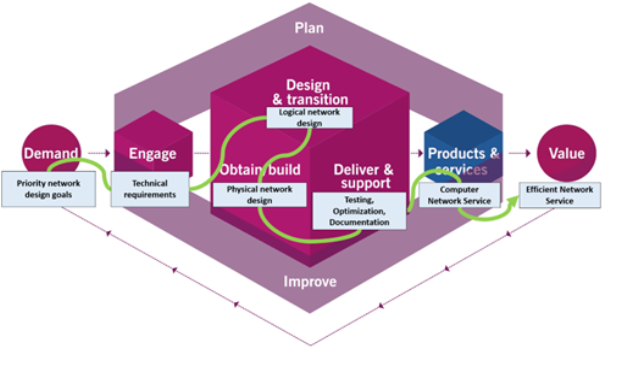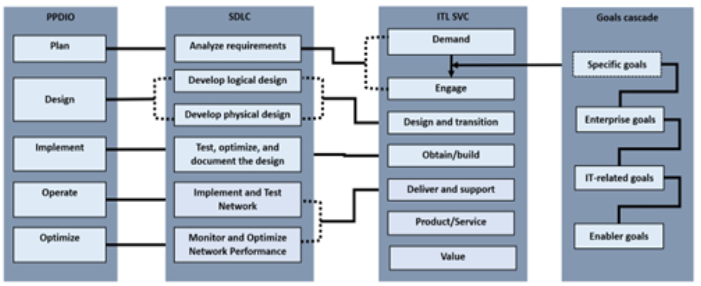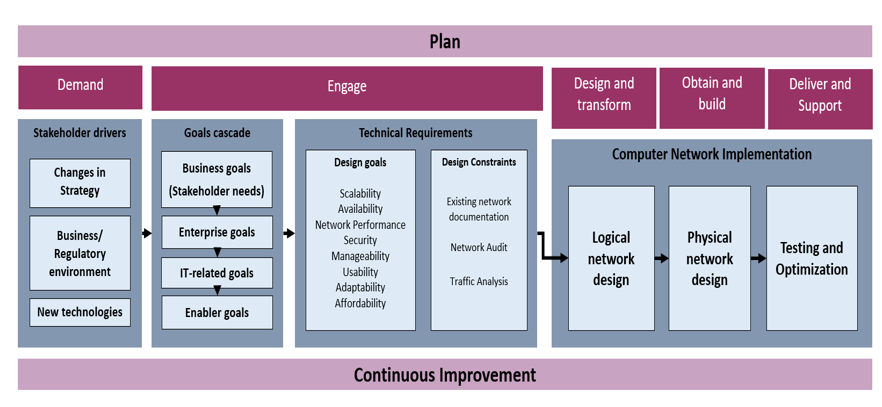Building a Network Design and Implementation Framework of a Campus Area Network for the Mariano Marcos State University
- Milagros B. Barruga
- Thelma D. Palaoag
- -297
- May 4, 2024
- Information and Communication Technology
Building a Network Design and Implementation Framework of a Campus Area Network for the Mariano Marcos State University
Milagros B. Barruga, Thelma D. Palaoag
Department of Information Technology and Computer Science, University of the Cordilleras, Gov. Pack Rd., Baguio City, +63 74 442 3316 local 214
DOI:https://doi.org/10.51244/IJRSI.2024.1104023
Received: 26 March 2024; Accepted: 01 April 2024; Published: 04 May 2024
ABSTRACT
A framework for network design and implementation is imperative to ensure value in the delivery of network services. Frameworks serve as guides in identifying value propositions to address the changing demands of the organization’s stakeholders. Frameworks prescribe efficient methods and appropriate tools that can be used to ensure that the implementation of a technological innovation addresses the demands, regardless of the changing IT landscape.
The demand to deliver an efficient network service requires that the network have optimized levels of scalability, availability, performance, security, and other desirable network goals. These goals have to be prioritized depending on the goals of the organization. A framework for identifying priority service delivery components must be in place in order for the governing body and IT managers of the organization to objectively prescribe appropriate technological solutions to employ.
The development of the proposed framework is patterned on Plan Design Implement Operate Optimize network life cycle, anchored on the principles of the service value chain of ITIL and the principles of IT governance using the goals cascade of COBIT. A review of existing studies was carried out to determine the prevailing technical goals and technology enablers that are peculiar to IT service management in a campus environment, specifically the delivery of computer network service.
A framework was drawn to serve as a guide to achieving network design goals that are aligned with business goals, compliant with standards, and provide value to customers of state universities and colleges like Mariano Marcos State University.
Keywords: network design and implementation, campus area network, IT governance, goals cascade, IT service, system value chain
INTRODUCTION
The accelerating changes in the internetworking industry compels network designers to develop continually changing state-of-the-art networks. These changes are evident with increasing requirements for remote access, security, bandwidth, scalability, reliability, and vendors and standards bodies introducing new protocols and technologies [1]. Furthermore, the peculiarities of the volatile, uncertain, complex and ambiguous world [2] overwhelm managers who may pursue drastic actions to cope. Drivers of innovation creates apparent needs and some managers resort to quick fix-solutions that are eventually short-lived and inefficient as these solutions may not align to the business requirements of the organization.
Developing a framework for network design and implementation necessitates careful consideration of the business and technical goals of the organization and the value that it intends to deliver to its internal and external customers. This prerequisite is often overlooked by state-run organizations like state universities and colleges (SUC), especially if their strategic directions are not inclined to digital transformation and no definite funding source is in place. In such cases, the computer network system is implemented as temporary support structures and not as crucial tools and key drivers for achieving the organization’s strategic, functional and operational goals and as leverage for creating value for the organization’s stakeholder.
The value requirement from the network service is on the network’s efficiency. There are eight network design goals that IT managers may take into consideration to build an efficient network system. These are scalability, availability, performance, security, manageability, usability, adaptability, and affordability [1]. Some organizations are inclined to satisfy on just a few of these design goals, and depending on the business goals, a tradeoff among these goals is performed. Literatures prescribe various mechanism and approaches to ensure that certain network design goals are addressed. Case studies highlight the need for greater reliability (fault-tolerance), scalability, QoS and security [3], strike a balance on security, availability, scalability and performance [4], satisfy QoS requirements and better availability on converged service network [5], and greater efficiency, scalability and robustness [6]. Some studies focus on problem-specific solutions when proposing and acquiring network infrastructure. An agent-oriented implementation that considers an intelligent shell that adapts to various changes in the computer network provides flexibility in the system [7]. Network shaping methods were also employed and tested to improve the network performance [8]. Dealing with increasing amount of heterogenous information exchange between and among various physical and virtual entities calls for the inception of model-driven interoperability mechanisms [9]. Setting-up a converge network and recommending VOIP for optimal infrastructure utilization, and campus-cloud for data recovery and network agility are now also considered mitigating intervention for mobility and resilience among others [6]. To some extent, the setting-up of a computer network was related most to budget, such is over provisioned to the extent that the budget allows [10]. Planned usage, and intelligent upgrades depends on the availability of funds. Taking into consideration the issue on affordability, Hernandez [4] posits that networks can eliminate repetitive operations, innovate minimum processes, generate added value and increase strength of the organization, thus affordability. In doing so however, the network performance must be well calculated to avoid wasteful cost [8]. Investing on single integrated network [5], a converged network that supports effective data sharing [6] can reduce investment and maintenance cost. The issue on affordability is critical for state-run schools as they are dependent on the availability of budget allocation that the government provides. Because SUCs are subsidized by the national government, how they efficiently utilize allotted funds is closely monitored and carefully scrutinized [11]. A careful consideration on the network design goals and constraints must therefore be put into a perspective so that campus administrators and their network managers may be able to allocate their scarce resources to achieve their goals.
Apart from achieving their strategic goals, SUCs are also expected to adhere to institutional standards in their processes. Compliance to technical requirements is crucial as various accrediting bodies impose stringent requirements to ensure quality management systems, and procedures and processes that are compliant to national and international standards. Schools consider as bragging rights to qualify to certain level of accreditation, certification, or rankings [12].
The pursuit to digital transformation and the desire to employ new technologies requires systems implementations that stresses on the use of computer network technology as backbone for operations [10]. The efficient operations of computerized systems and automated processes whether outsourced or developed in-house, rely on a robust computer network infrastructure, and the delivery of network support.
The challenge therefore for achieving an efficient network system as a value provision to customers lies on the identification of specific factors that are indicative of a network’s ideal status as it is aligned with the organization’s goals and objectives, compliance to standards, and adherence to emerging technologies while considering the cost of its implementation.
A framework for network design and implementation is imperative to ensure value in the delivery of network services. Frameworks serve as guide in identifying value propositions to address the changing demands of the organization’s stakeholders. Frameworks prescribe efficient methods and appropriate tools that can be used to ensure that the implementation of a technological innovation addresses the demands regardless of the changing IT landscape. IT frameworks lay out guidelines, best practices and operating principles to help organizations achieve their institutional objectives and motivations for improvement. These ensure alignment between the way IT services are delivered and the value they enable [1]. With a framework, only the factors that are critical in the achievement of the organization’s mandate and visions are mapped in the overall roadmap to successful computer network system implementation. These can be laid out objectively based on the motivations, resources and financial capability of the SUC.
An IT governance framework can be a useful guide to ensure the alignment of IT solutions to the organization’s goals. As leverage to value creation, the computer network system facilitates the achievement of outcomes that the organization aims to achieve. Established standards and measures or tools can be employed to objectively determine the performance and conformance of the successful implementation of a solution, thus ensure value creation.
The top-down network design approach includes exploring organizational and group structures to find the people for whom the network will provide services and from whom the designer should get valuable information to make the network design succeed [1]. This information will serve as basis in the logical and then the physical design of the network. While this approach is specific to computer network implementation, a more systematic and holistic approach to the adoption of innovation or delivering IT services can be employed to ensure that all important factors in identifying and prioritizing business and technical goals are considered. The rudiments of IT governance using the COBIT toolkit is helpful in assessing the maturity of the organization in its capabilities to deliver its IT services. The goals cascades process provides measures that ensures the alignment of IT governance and management objectives with the stakeholders’ drivers and needs [13]. Being able to quantitatively identify the alignment goals of the organization means that the cost allocation and value proposition for the IT service is optimized.
Stakeholders’ drivers and needs are requirements that can be translated as the demand component of the ITIL service value chain (SVC). The fulfillment of this demand translates to value creation to the customers and other stakeholders. The SVC serves as guide to create value streams for designing and implementing IT services like the design and implementation of a network system [18].
This work proposes a framework that maps the three approaches: top-down network design, COBIT IT governance, and ITIL service value chain to design and implement an efficient network system.
Section 2.1 of this work discusses the groundwork concepts to describe efficiency in computer network system. An efficient network is the value proposition for the IT service delivery. Section 2.2 presents system concepts behind the formulation of the proposed framework. This includes issues in the mapping and integration of the three related approaches. Section 2.3 is the discussion of the proposed framework.
RESULTS AND DISCUSSION
Efficiency in Computer Communication System
An efficient network design addresses the prescribed network design goals. Scalable networks are able to provide support as the network grows. It must adapt to increases in the network usage and scope. High availability suggests 99.999% uptime. This requires that the network must be resilient that it can to rescore operations after a disaster. Network users complain if the network does not work on certain performance levels. High performance network must satisfy certain levels of capacity, utilization, throughput, and response time, among others. Efficiency in the network performance shows effectivity in comparison with cost in time, money, and effort. It should entail low overhead, or less wastage to produce the required output. Security affects efficiency. Threats disrupts the business operations. Manageable networks establish a documented monitoring and maintenance of the network infrastructure which facilitates new network design and upgrades. This is useful for network managers. Usability points to the network’s ease of use to include support to mobility, and configurations that support dynamic configurations. Highly adaptable networks are easy to implement with new technologies. If it cannot be adaptable, it will negatively affect availability. Cost-effectiveness or affordability requires that it carries the maximum amount of traffic for a given financial cost. The budget for technology adaption must be considered as it will dictate the best possible infrastructure to acquire [1]. Table 1 summarizes the network design goals using the top-down design. Each of these goals can be measured with the identified variables for operationalization. These variables were defined by Oppenheimer and other researchers in the domain.
Table 1. Design goals for an efficient network management
| Technical Goals | Variables for operationalization | Related works |
| Scalability | Percent of supported network usage and scope | [1] [3] |
| Availability (includes reliability, redundancy, resiliency) | Percent uptime | [1] [3] |
| Cost of downtime | ||
| Mean Time Between Failure (MTBF) and Mean Time to Repair (MTTR) | ||
| Network Performance (includes QoS) | Capacity (bandwidth) | [1] [3] [14] [5] [8] |
| Utilization (percentage of capacity) | ||
| Optimum utilization | ||
| Throughput (pps, goodput, application layer throughput) | ||
| Offered load | ||
| Accuracy (BER) | ||
| Latency (delays, jitter) | ||
| Response time | ||
| Data loss, Jitter, ping | ||
| Optical power loss | ||
| Security | Number of network assets that are damaged | [1] [6] |
| Number of network assets accessed inappropriately | ||
| Manageability | [1] | |
| Usability | Level of user-friendliness | [1] |
| Adaptability | Cost of recording/simulation of number of bytes each router receives and sends at certain point in time | [7] [15] |
| Affordability | Amount of traffic for a given financial cost | [1] [4] [6] |
| Cost of shared resources | ||
| Cost of maintaining legacy systems |
There is not much literature that objectively describe how should the tradeoff be performed among the desired network design goals. The network designer has to decide as a result of identifying customer needs and goals as to which of the network design goals must be prioritized. Since customers are not always knowledgeable on the technicalities of the network design goals, the tradeoff analysis may not necessarily reflect the actual need of the customers, much less to ensure that the network design goals are aligned with the business goals.
Approaches in Development of the Proposed Network Design and Implementation Framework
There are a number of approaches that the organization can employ when trying to map its business goals with its network design goals.
Structured systems approach
Specific to network design, the Systems Development Life Cycle (SDLC) and the Plan Design Implement Operate Optimize (PDIOO) network life cycle are the common methods. The SDLC for network design is described with six sequential steps that runs as a cycle. The PDIOO works in parallel with the SDLC (Figure 1). The idea is always following the structured systems approach which is characterized by designing top-down sequence wherein specifications of the network design are derived from the requirements gathered at the beginning of the sequence. Although it does not prescribe a specific technique or model, the structured systems analysis specifies that during the design project, several techniques and models can be used to characterize the existing system, determine new user requirements, and propose a structure for future system.
Figure 1. Structured systems analysis approaches to network design and implementation
In analyzing requirements for the SDLC, the network analyst interviews users and technical personnel to gain an understanding of the business and technical goals for a new and enhanced system. After which, the analyst shall characterize the existing network capabilities, from which he/she will be able to analyze current and future traffic. This phase is in parallel with the PDIOO’s planning phase. It involves identification of network requirements including analysis of areas where the network will be installed and who will be the users requiring the network service. Both the Analyze requirements and Plan stages aim to develop recommendations for the network design options that correlates with business and technical goals. It is expected that at this stage, the network designer has already identified the critical and less critical goals and therefore is now able to recommend network design options.
Organizations are unique due to their specific priority goals. Inefficient decision-making and lack of accurate information can shatter the efforts of an organization towards the achievement of their goals and objectives. The lack of appropriate IT governance framework is also one of the reasons why initiatives or propositions for improvement simply stopped at the proposal level because of the lack of alignment to the overall goals and objectives of the organization. The ITIL’s guiding principle of focusing on the value [16] and COBIT’s principle on meeting the stakeholders’ needs purports the need for IT governance to align the processes or activities with the organization’s objectives, such that the governing body continuously look into the performance and compliance of the services for continual improvement (Figure 2).
Figure 2. Mapping COBIT and ITIL principles of IT Governance
IT Governance approach
Gaining an understanding of the business and technical goals can be holistically employed using the COBIT IT governance guide. This tool is necessary to ensure the alignment of business goals to its technical goals, specifically on prioritizing the objectives that it needs to tackle first. This idea is especially useful for organizations which have limited resources so that they can prioritize where their scarce resource can be allotted first in the course of project implementation. The COBIT IT governance toolkit provide automated tools that guides governing bodies in determining their priority objectives based from their specific goals. Established metrics and conventions are embedded in the COBIT canvass to determine the priority objectives from the design factors that the organization wishes to satisfy. Besides the design factors as reference, COBIT also provides another guide that leverages on the organization’s specific goals, denoted in Figure 3 as stakeholder needs. These needs generally entail benefit realization, risk optimization, and resources optimization. These needs are inputs from which the governing body of the organization can automatically generate a list of priority goals. Balance score cards are utilized to automatically analyze the cascading of these goals: first, map the organization’s specific goals with the enterprise goals, then enterprise goals with alignment goals, then the alignment goals with prioritized enabler goals (governance and management goals) [17].
Figure 3. Goals cascade
The organization’s specific goals can vary due to change in organizational strategies, change in business or regulatory environment, or triggered by the introduction of new technologies. These specific goals are arbitrary at any point in time due to inevitable changes or as a requirement for continual improvement. Table 2 is a sample checklist of specific goals which can be used as input to the goals cascade. These are actually a set of typical business goals defined by Oppenheimer.
Table 2. Business goals checklist
| Business goal |
| Increase revenue and profit |
| Increase market share |
| Expand into new markets |
| Increase competitive advantages over companies in the same market |
| Reduce costs |
| Increase employee productivity |
| Shorten product-development cycles |
| Use just-in-time manufacturing |
| Plan around component shortages |
| Offer new customer services |
| Offer better customer support |
| Open the network to key constituents (prospects, investors, customers, business partners, suppliers, and employees) |
| Avoid business disruption caused by network security problems |
| Avoid business disruption caused by natural and unnatural disasters |
| Modernize outdated technologies |
| Reduce telecommunications and network costs, including overhead associated with separate networks for voice, data, and video |
| Make data centers more efficient in their usage of power, cabling, racks, storage, and WAN circuits |
With the use of COBIT goals cascade canvass tool, a balance scorecard can be generated when mapping stakeholder needs with enterprise goals (Table 3), and mapping enterprise goals with alignment goals (Table 4).
Table 3. Enterprise goals checklist
| Enterprise goal |
| Portfolio of competitive products and services |
| Managed business risk |
| Compliance with external laws and regulations |
| Quality of financial information |
| Customer-oriented service culture |
| Business service continuity and availability |
| Quality of management information |
| Optimization of internal business process functionality |
| Optimization of business process cost |
| Staff skills motivation and productivity |
| Compliance with internal policies |
| Manages digital transformation program |
| Product and business innovation |
Table 4. Alignment goals checklist
| Alignment goal |
| IT compliance and support for business compliance with external law and regulations |
| Managed information and technology-related risks |
| Realized benefits from information and technology-enabled investments and services portfolio |
| Quality of technology-related financial information |
| Delivery of I&T services in line with business requirements |
| Agility to turn business requirements into operational solutions |
| Security of information, processing infrastructure and applications, and privacy |
| Enabling and supporting business processes by integrating applications and technology |
| Delivery of program on time, on budget and meeting requirements and quality standards |
| Quality of IT management information |
| IT compliance with internal policies |
| Competent and motivated staff with mutual understanding of technology and business |
| Knowledge, expertise and initiatives for business innovation |
The resulting matrix is finally mapped with the enable goals or the 40 governance and management objectives (Figure 3). Each of these goals have assigned processes, practices and activities. This final mapping will generate the priority governance and management objectives where the governing body can refer from in identifying the activities that the organization needs to prioritize. COBIT has a complete reference for specific activities that needs to be undertaken for each of the practices of each of the processes defined in the enabler goals. By being able to identify the most important governance and management goals, the organization can focus its efforts on the specific activities of the priority process to address its business goals. The prioritization that is established here can then be a basis for the tradeoff analysis for the specific network design goals. The same principle of goals cascading can be employed for the enabler goals with the network design goals.
Figure 4. Governance and Management objectives
Service value stream for creating value from network service
The overall layout of the proposed framework is patterned from the service value system of the ITIL framework with the service value chain as its core component. Value propositions always look into the demand of developing the service whether to deliver service, to improve existing capabilities, or to introduce an innovation. The demands are the priority business goals which was generated from the results of the goals cascade. “Engage” is the stage in the ITIL framework that investigates specific stakeholder needs, which are inputs to the organizations strategic planning and portfolio management. Value propositions in developing specific service or product can be developed with the SVC as the organization carry out the stages to design and transform, obtain and build, or design and support [18].
Figure 5. Service value stream for the network service
The design and development of a network system constitutes one service value stream in the ITIL SVC, wherein the stakeholder requirements constitute the Demand of the value chain. To Engage is to employ analysis on the network design goals and constraints. Following the SDLC network life cycle, the value stream shall provide a computer network service after Testing, Optimization, Documentation. By employing the necessary conventions in each of these essential value-adding steps, an efficient network service shall be delivered to the service customers.
The Proposed Network Management Framework
Figure 5 shows the mapping of the various approaches that were utilized to derive the proposed framework. It shows here the component activities of the PPDIO, SDLC, ITIL Service Value Chain, and the COBIT Goals Cascade tool. The broken lines show the parallel activities from among the related approaches. With emphasis in this investigation is the Goals Cascade which serves as intermediary between the Demand and Engage activities of the ITIL SVC. By employing this orchestration of activities, the proposed framework was developed.
Figure 6. Mapping the Different Approaches
Figure 6 shows that the proposed framework. As an IT service, the network design and implementation define its Demands, translated here in the figure as Stakeholder drivers. These drivers emanate from any change in the organizational strategies, business and regulatory environment and new technologies for adaption. These drivers influence the organization’s business goals.
The Engage stage in this framework is now comprised of two approaches. First is the use of the COBIT template for goals cascade, then, the tradeoff analysis of the network design goals. This is a critical stage of ensuring that the IT service aligns with the business and enterprise goals.
Figure 7. Proposed Network Design and Implementation Framework
The proposed framework constitutes as one value stream in the ITIL SVC, the stakeholder drivers constitute the demands of the value chain. To engage is to employ analysis thru goals cascade and tradeoff analysis. Following the top-down network design approach completes the value stream for the computer network implementation.
For SUCs, the following items entail the Stakeholder drivers as illustrated in Figure 7. Strategic planning is carried out to lay down a 3-5-year plan for the organization. The development of the strategic plan subsumes issues on corporate politics, change management and changes in the strategic directions, as the organization looks into the areas for improvement using the current performance evaluation results as baseline [19]. The Business and Regulatory Environment outlines the legal bases for operation of the SUC. These include policies and guidelines in the execution of university’s functions in instruction, research, and extension. These legal bass include CHED Memorandum Orders, and PSGs for each of the degree program offerings, and other regulatory requirements set by the Civil Service Commission, Department of Budget and Management, Commission on Audit, National Economic and Development Authority, and other agencies including partner agencies. Subjecting the organization to evaluation for delivering quality management to its stakeholders also requires its compliance to AACCUP, and if so desired by the top management, subjecting the organization to national and international certification and rankings like Philippine Quality Assurance (PQA), International Standards for Operation (ISO), World Universities with Real Impact (WURI), Times Higher Education (THE), and the like. Proactive leadership in SUCs consider novel priorities beyond the regular strategies should funding allows. Futures thinking and strategic foresights sees beyond the regular undertaking and pursue new developments next to other priorities, seeking solutions to problems that is yet to encounter. This is imperative in the VUCA world. SUCs also delve into adopting emerging trends that can transform existing initiatives into digitalized status. These are the drivers that are arbitrarily considered that changes the business priorities. Once these business priorities are in place, the design and implementation of innovations can be ascertained to give value to the organization.
Figure 8. Stakeholder Drivers for State Universities and Colleges
The Goals Cascade tool will take the business goals as its input. After processing, the priority programs, projects and activities will be identified. This priority activities will be the concrete reference to objectively perform the tradeoff analysis for the network design goals. This stage will ensure that prioritizing network design goals is objectively determined.
After determining the priority goals, the tradeoff analysis on the desired network goals may now be mapped with the objectives derived from the goals cascade. In doing so, the prioritization of the network design goals ensures that the right combination of network resources is taken into consideration when developing the network designs. This is with reference to the existing capabilities or design constraints. However, these design constraints are secondary considerations in the logical design after the priority design goals are already satisfied.
CONCLUSION
The proposed framework employs the conventions of structure systems approach in network design and implementation as it is anchored on the ITIL service value chain and COBIT IT governance goals cascade. Employing these principles and tools ensures that the network service is a value proposition that addresses the priority goals of the organization as it objectively aligns the network goals with the business goals. The business goals of an SUC are always depended on the funding source. However, with careful consideration of the other key factors, the organization may be able to maximize its scarce resources by addressing their priority goals. These goals are objectively determined with the proposed framework for design and implementation.
ACKNOWLEDGMENTS
My thanks to the MMSU Seamless Campus Network project team and the Fourth Industrial Revolution ad hoc group for the insights.
REFERENCES
- P. Oppenheimer, Top-Down Network Design Third Edition, Indianapolis: Cisco Systems, Inc., 2011.
- D. Sinha and S. Sinha, “Managing in a VUCA World: Possibilities and Pitfalls.,” Journal of Technology Management for Growing Economies., vol. 11, no. 1, pp. 17-21, 2020.
- M. F. Kadhin, N. S. Ali and S. Al-Khammasi, “Multi-Phase Methodology for Proposing a High Performance Switcched Campus Network: University of Kufa Case Study,” Journal of Engineering and Applied Sciences, vol. 13, no. 16, pp. 6700-6707, 2018.
- L. Hernandez, H. Villanueva and S. Estrada, “Proposal for the Design of a new Technological Infrastructure for the Efficient Management of Netwrok Serices and Applications in a High Complexity Clinic in Colombia,” in Advances in Intelligent Systems and Computing, 2018.
- Giovanni and N. Surantha, “Design and Evaluation of Enterprise Network with Converged Services,” Procedia Computer Science, vol. 135, pp. 526-533, 2018.
- A. A. Ojugo and A. Eboka, “Mitigating Technical Challenges via Redesigning Campus Network for Greater Efficiency, Scalabilty and Robustness: A Logical View,” I.J. Modern Education and Computer Science, vol. 6, no. 2020, pp. 29-45, 2020.
- N. Shiratori, T. Suganuma, S. Suguira, G. Chakraborty, K. Sugawara, T. Kinoshita and E. Lee, “Framework of a flexible computer communication network,” Computer Comunications, vol. 19, no. 1996, pp. 1268-1275, 1996.
- M. Wairisal and N. Surantha, “Design and Evaluation of Efficient Bandwidth Management for a Corporate Network,” in 2018 International Conference on Information Management and Technology, 2018.
- G. Zacharewicz, N. Daclin, G. Doumeingths and H. Haidar, “Model Driven Interoperability for System Engineering,” Modelling, vol. 1, pp. 94-121, 2020.
- J. Wynekoop and J. Finan, “Enterprise Network Design: How is it done?,” in IFIP International Federation for Information Processing, 2001.
- M. I. P. Conchada and I. G. C. Zamudio, “The cost efficiency of state universities and colleges in the Philippines,” The Philippine review of Economics, vol. L, no. 2, pp. 83-104, 2013.
- H. A.-H. Ibrahim, “Quality Assurance and Accreditation in Education,” Open Journal of Education, vol. 2, 2014.
- O. Z. Olorunojowon, “ISACA Drive Transparent and Measurable Value With COBIT 5 Process Metrics,” ISACA, 12 December 2017. [Online]. Available: https://www.isaca.org/resources/news-and-trends/industry-news/2017/drive-transparent-and-measurable-value-with-cobit-5-process-metrics#:~:text=COBIT%205%20combines%20the%20goals,and%20priorities%20of%20the%20organization… [Accessed 10 August 2022].
- Z. Abdellaoui, Y. Dieudonne and A. Aleya, “Design, implementation and evaluation of a FIber To The Homw (FTTH) access network based on a Giga Passive Optical Netwrok (GPON),” Array, vol. 10, 2021.
- J. HIllenbrand, P. Gonnheimer, E. Gerlitz and J. Fleischer, “Design and implementation of holistic framewrok for data integration in industrial machine and sensor networks,” Procedia CIRP, vol. 104, pp. 1771-1776, 2021.
- M. A.-S. H. H. Yahya Al-Ashmoery, “Impact of IT Service Management and ITIL Framework on the Businesses,” in 2021 International Conference of Modern Trends in Information and Communication Technology Industry (MTICTI), 2021.
- T. H. Anant Joshi, “COBIT as a Framework for Enterprise Governance of IT,” in Enterprise Governance of Information Technology, Switzerland, SpringerNature Switzerland AG, 2020, pp. 125-162.
- S. B. A. S. Abdelaali Himi, “The IT Service Management according to the ITIL framework,” IJCSI International Journal of Computer Science Issues, vol. 8, no. 3, pp. 515-522, 2011.
- Mariano Marcos State University, “Mariano Marcos State University Updated Stratgeic Plan 2019-2022,” Mariano Marcos State University, Batac, Ilocos Norte, 2019.


